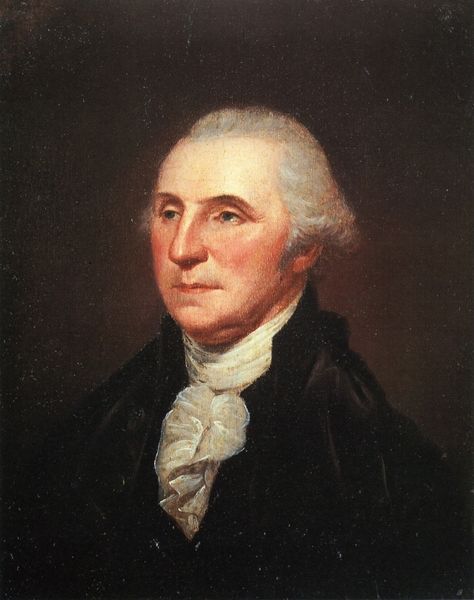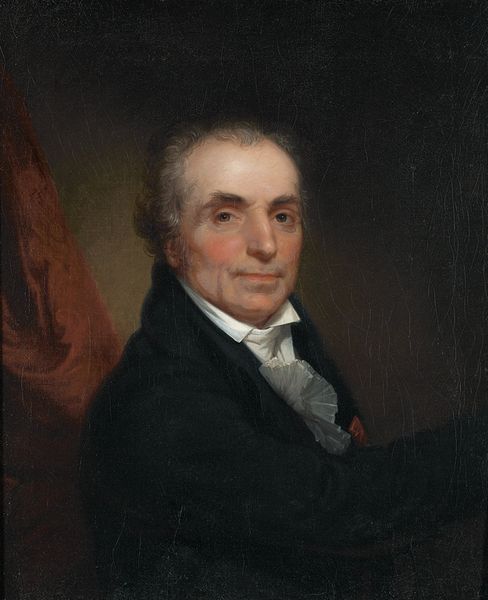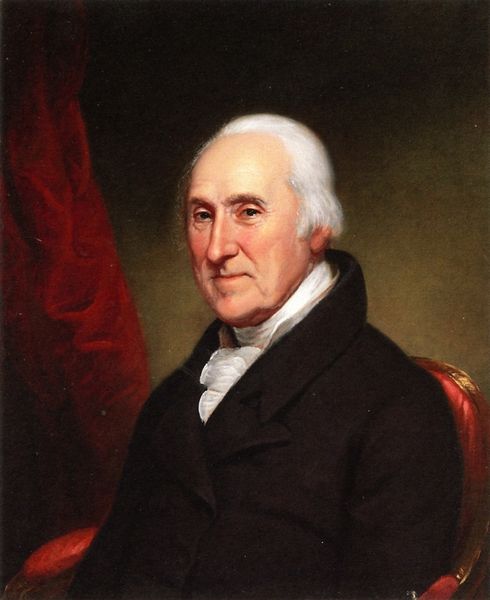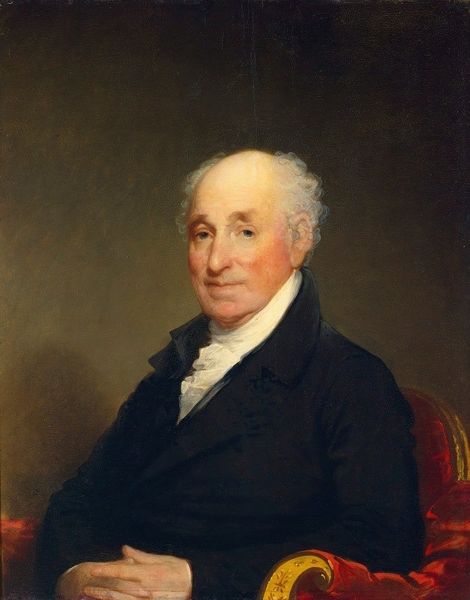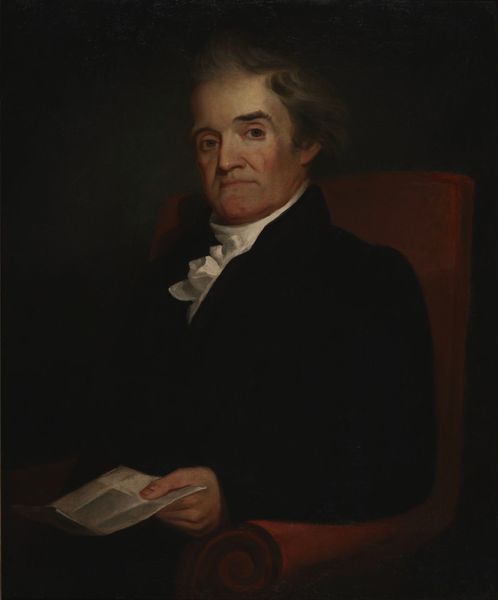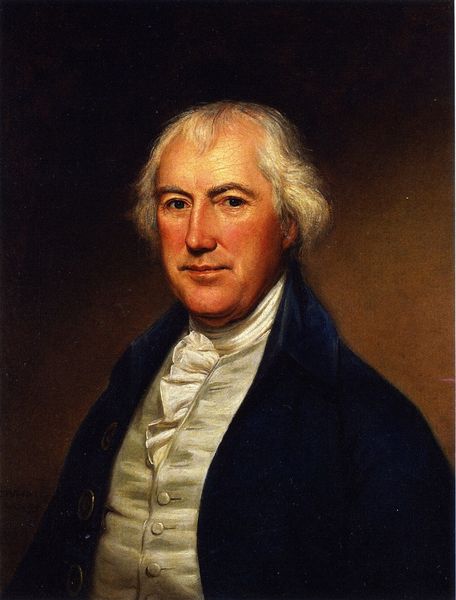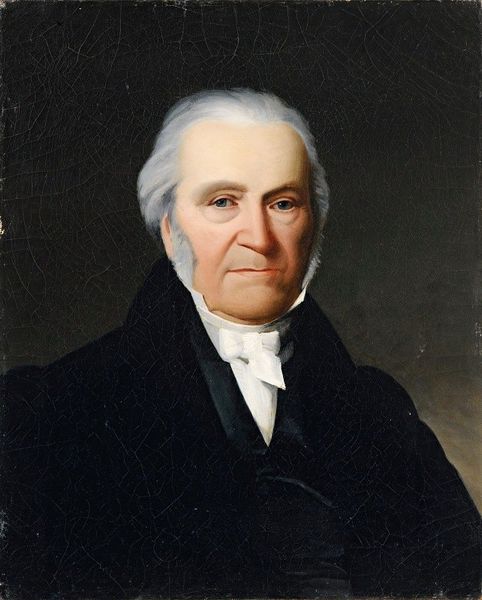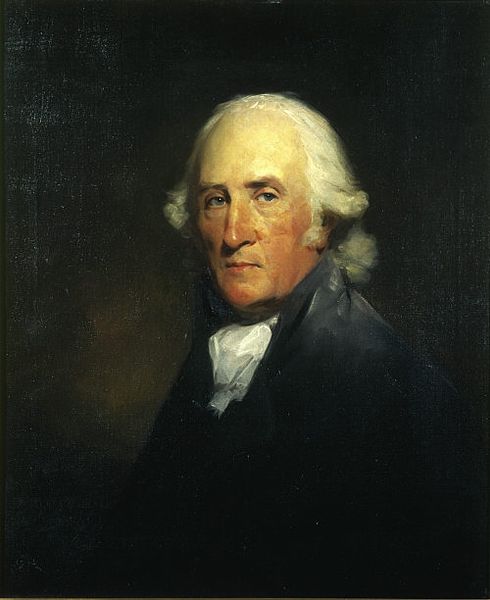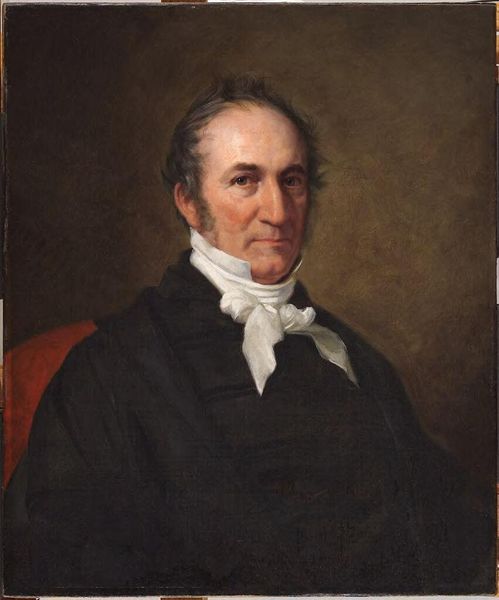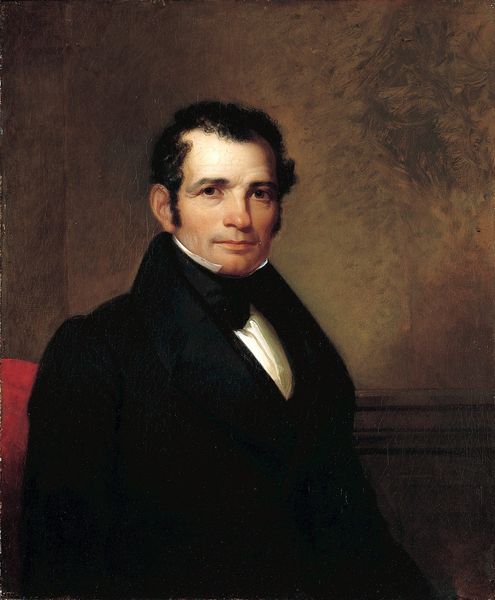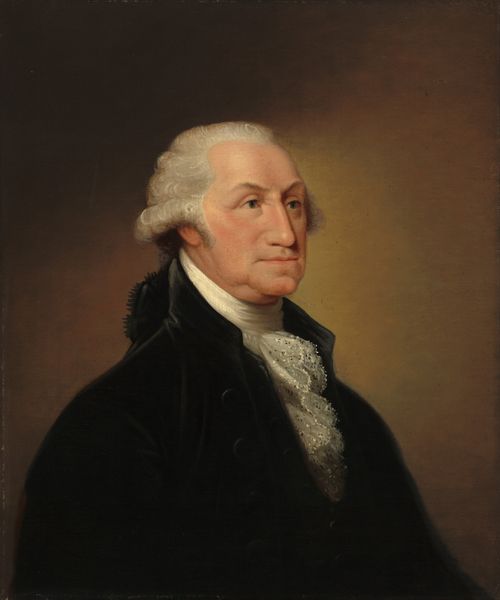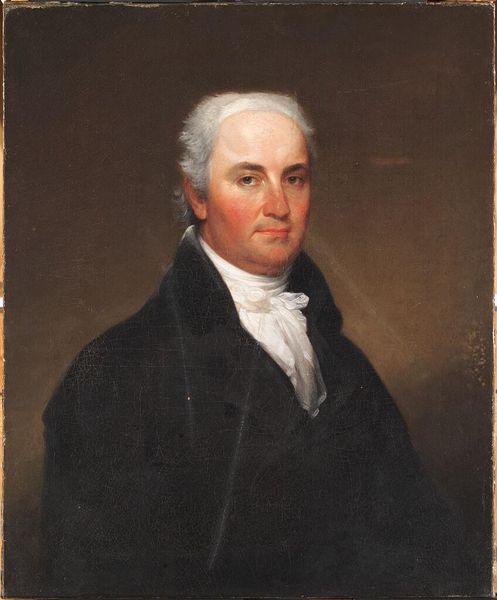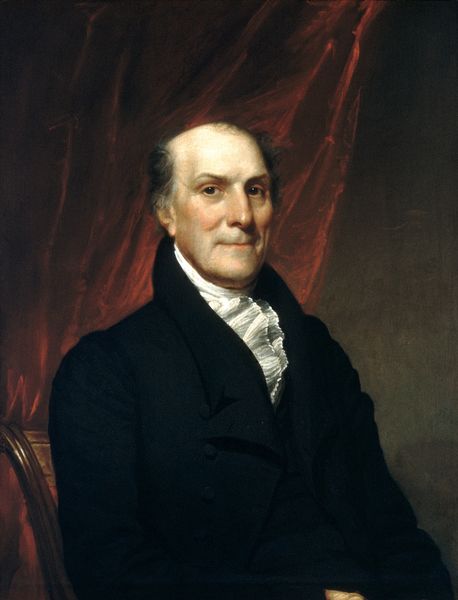
painting, oil-paint
#
portrait
#
portrait
#
painting
#
oil-paint
#
romanticism
#
realism
Dimensions: overall: 91.7 x 71 cm (36 1/8 x 27 15/16 in.) framed: 126.7 x 106 x 10.8 cm (49 7/8 x 41 3/4 x 4 1/4 in.)
Copyright: National Gallery of Art: CC0 1.0
Editor: Here we have Jacob Eichholtz’s "Robert Coleman," an oil painting circa 1820. The gentleman has such a stern look on his face, and his clothes are quite imposing. What story do you think this portrait tells? Curator: This portrait speaks volumes about the construction of early 19th-century American identity, particularly among elites. Robert Coleman, likely a man of influence, is portrayed with symbols of power – the dark suit, the writing materials, the direct gaze. Eichholtz, however, subtly reveals the sitter’s humanity. Think about the social and political climate of the time. Who held power? Editor: So, it's about wealth, and white, male privilege, maybe? The quill and papers suggest learning, education, and intellectual authority... Curator: Precisely. Now, consider the artist's choice of realism within the broader Romantic movement. It wasn’t just about depicting Coleman, but also about reinforcing social hierarchies, wouldn't you agree? Think about access, who commissions these paintings and who is systematically excluded from portraiture at the time. Editor: Yes, it creates a clear image of who was deemed worthy of representation. It feels a bit like propaganda in a way, cementing a certain type of person as important and powerful. Curator: It is powerful because it presents itself as objective truth. Eichholtz presents Coleman as an individual but does not question or subvert dominant ideologies. Considering art's role in reflecting, reinforcing, or resisting societal power structures… where do you think this portrait stands? Editor: It reinforces them. I see it now. By idealizing Robert Coleman, the portrait normalizes and perpetuates a specific power structure, sadly excluding anyone who doesn't fit that mold. Curator: Absolutely. It reminds us to look beyond the surface and question what narratives are being constructed through art. Editor: It is about more than just who it represents and about what it subtly excludes or actively resists against existing social and power structures.
Comments
No comments
Be the first to comment and join the conversation on the ultimate creative platform.

